| Umělec 2011/2 >> Magda Tóthová | Просмотр всех номеров | ||||||||||||
|
|||||||||||||
Magda TóthováUmělec 2011/201.02.2011 Milena Dimitrova | profile | en cs de |
|||||||||||||
|
Borrowing heavily from fairy tales, fables and science fiction, the art of Magda Tóthová revolves around modern utopias and social models and their failures. Her works address personal and social issues, both the private and the political. The stylistic device of personification is central to the social criticism emblematic of her work and to the negotiation of concepts used to construct norms. One example is “The Decision,” in which the symbol of the snake, having grown tired of “his” symbolic character and the reduction to biblical interpretations, has decided to destroy the symbol that “he” represents. This happens first and foremost as “he” contemplates personal happiness and “he” observes the sadness and emptiness in his life.
Similarly, the process of emancipation or an act of self-reflection forms the starting point for the central story of “When coincidence began to doubt.” The trains of thought involved in the personification of chance circle around questions of whether the world might not be a better place without chance, even though people consider it to be fair and impartial. Fundamental to Tóthová’s interest in the formation of myths (which the snake represents) or the essentialism underlying the concept of chance is the fact that she views the world as changeable. If the idea or concept of chance did not exist, then those things that we would otherwise see as given would have to be understood as social constructs. This deconstructionist worldview forms the foundation for all of Tóthová’s works and leads her to pose feminist questions. Her stance on the subject of feminism can be summarized using her own words: “When I look at the history of women over the past 2,000 years, then one thing that stands out is that more than 1,900 of those years consisted of limitations on the other sex, that many have given their lives for a little piece of the freedom taken for granted by men (excluding male slaves), and that in some places they continue do so to this day. Utopian writings such as Christine de Pizan’s The Book of the City of Ladies from the year 1405 not only represented the possibility of questioning a strict patriarchal social order but also offered hope and new ideas. These were necessities. I thus do not find it primarily necessary to point out that on many levels women are still disadvantaged, but to call attention to the fact that we people have arranged all these things on our own, our society as well as our social systems.” Her works repeatedly raise issues of feminism, although these are never the main focus. Instead, they are used to address the possibilities of intervening into the prevailing order. She uses the opposites of male and female in order to describe real and potential worlds, objectivity and subjectivity, rational and irrational forces, and the prevailing order or an unrealized (but possible) one. Most of the time, Tóthová’s paintings and installations present dystopian worlds whose similarities with our own allow us to see them as parallel worlds. Her interest in utopias and dystopias and her view of the world as just one of many possible versions almost inescapably leads her to the genre of science fiction. For example, her work “Hell is forever” is based on the 1946 novel by Alfred Bester in which the “Devil” offers five people bored of life and sensual delights the possibility of creating their own parallel universe. But their creations end up being reflections of their own personal hell. In her work, Tóthová introduces an additional protagonist who wants to banish all negative emotions from her geometrical universe. But as with the protagonists from the novel, she is consumed by her endeavor and, like the others, her attempt is unsuccessful because of human failings. The installation “Welcome to the black cube” is a modification of the subject of “Hell is forever.” Here, a company called Ad Astra United offers to remove all negative emotions in the cosmos using a black box. The small-format collages accompanying the installation give an idea of the difficulties involved in such a simple solution, and the inflationary placement of the black box within the collages resonates with irony, making it a panacea (if we can afford it). The works all revolve around similar subjects, whose interconnectedness can be understood from Tóthová’s description: “The dystopias that I create in my works consist of all possible cultural forms and value systems, of which I am particularly interested in those moments in which private emotions such as existential doubt, the fear of strangers, and depression mutate into complex affairs of state. One reason why there are so few changes in society is that we don’t actually know what we want to change. This is the foundation for my work, and opens up the possibility for an endless number of social models in which we are, again and again, faced with the same problems—helplessness and stagnation.” The works “How a little terrorist lost his track,” “The golden egg’s even more glittering revenge fantasy” and “La Preda” contain additional stories, whose details we only discover with time. Translated from German by Stephan von Pohl.
01.02.2011
Рекомендуемые статьи
|
|||||||||||||
|
04.02.2020 10:17
Letošní 50. ročník Art Basel přilákal celkem 93 000 návštěvníků a sběratelů z 80 zemí světa. 290 prémiových galerií představilo umělecká díla od počátku 20. století až po současnost. Hlavní sektor přehlídky, tradičně v prvním patře výstavního prostoru, představil 232 předních galerií z celého světa nabízející umění nejvyšší kvality. Veletrh ukázal vzestupný trend prodeje prostřednictvím galerií jak soukromým sbírkám, tak i institucím. Kromě hlavního veletrhu stály za návštěvu i ty přidružené: Volta, Liste a Photo Basel, k tomu doprovodné programy a výstavy v místních institucích, které kvalitou daleko přesahují hranice města tj. Kunsthalle Basel, Kunstmuseum, Tinguely muzeum nebo Fondation Beyeler.
|







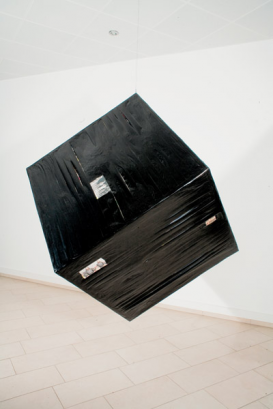




















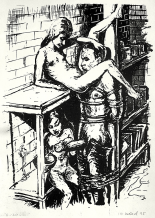
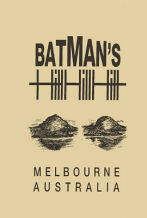
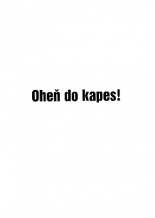
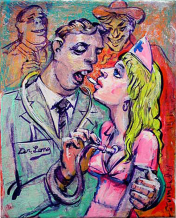


 New book by I.M.Jirous in English at our online bookshop.
New book by I.M.Jirous in English at our online bookshop.
Комментарии
Статья не была прокомментированаДобавить новый комментарий